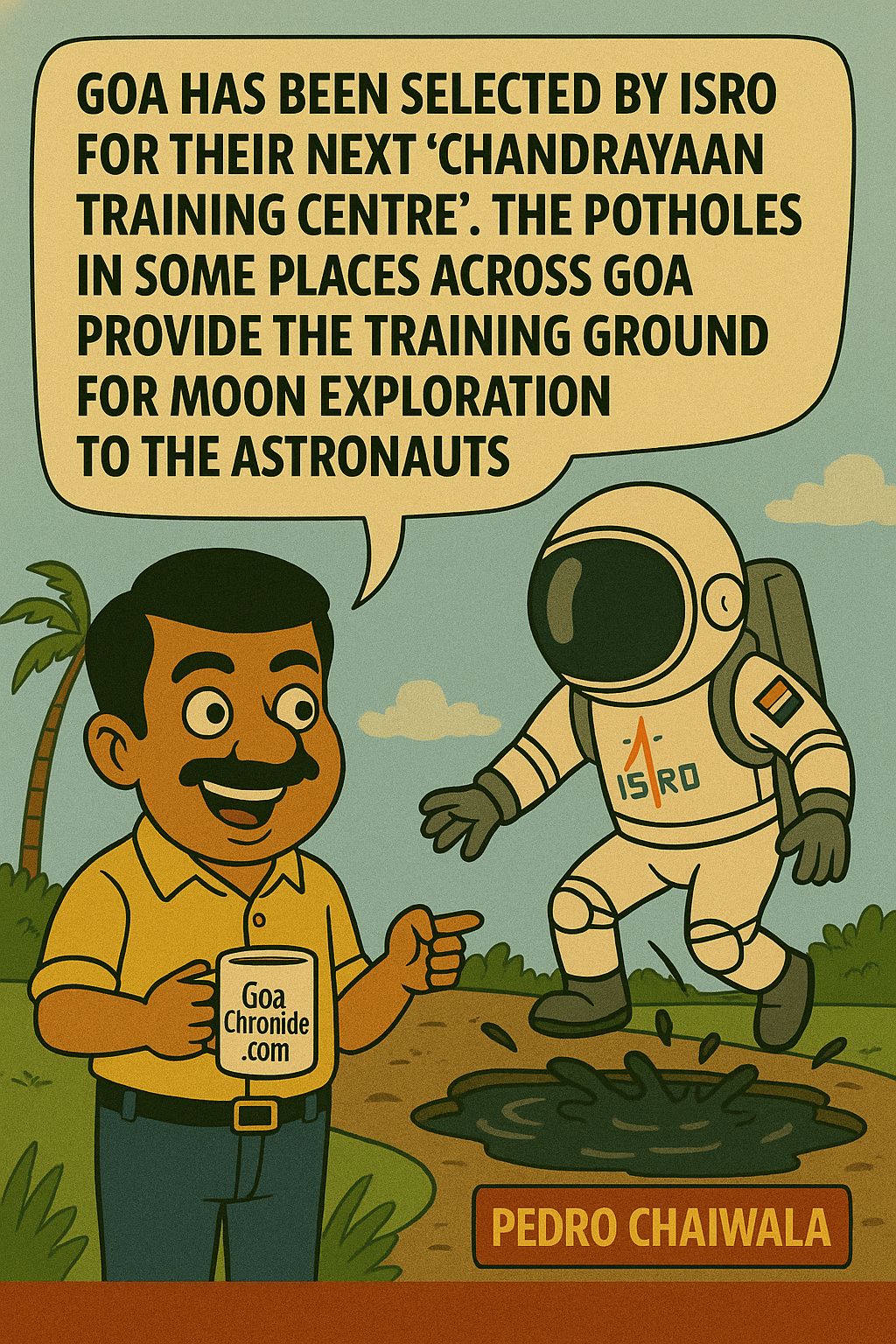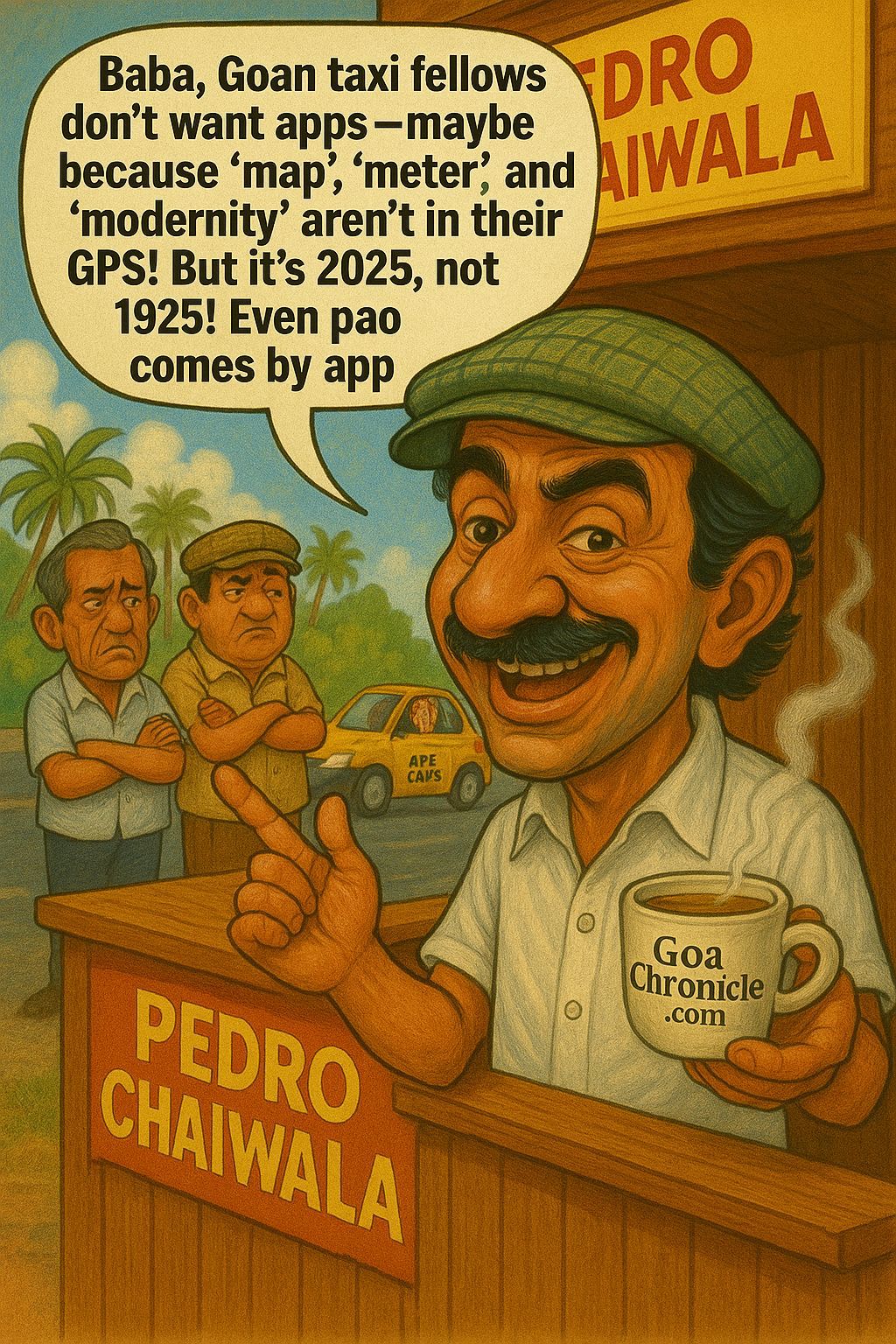Goa is no longer just India’s postcard of palm trees, susegad living, and weekend escapades. It is quietly scripting a transformation into a serious contender on the global digital nomad map, and the signs are everywhere if only one chooses to look closely. The government is pushing high-speed broadband into villages, co-working “sea hubs” are being announced along beaches, and conversations about a dedicated digital nomad visa are finding space in the corridors of policy. What was once dismissed as a lifestyle fad is now being measured in hard numbers, disposable incomes, and contribution to Goa’s economy, which already sees tourism account for about 16.43% of the state’s GDP and nearly 35% of its jobs. Goa’s challenge is clear: it has the lifestyle appeal, but can it also build the infrastructure and sustainability to become India’s global face for the remote work revolution?
In the first six months of 2025 alone, Goa welcomed 54 lakh visitors, a 10.5% jump over the previous year’s first quarter. While much of this surge was powered by domestic holidaymakers, tucked inside those numbers is a new breed of traveler—the digital nomad—who is not just coming for three days of beaches and shacks but staying three months or more, laptops in tow, joining Zoom calls by day and hitting beach cafés by night. Government officials estimate that over 10,000 digital nomads are already calling Goa home in a revolving fashion. These are not backpackers stretching rupees, but professionals often earning salaries in the ₹90 lakh to ₹1 crore range, with 30 to 35% of that wealth flowing directly into the Goan economy through homestays, restaurants, rentals, transport, and local services.
Goa’s natural assets—the coastlines that frame the Arabian Sea, the colonial architecture that whispers of history, and the multicultural vibe that blends Indian and Portuguese legacies—form its unmatched foundation. But what makes it increasingly attractive is its cost advantage. A nomad spending in rupees can often live with greater comfort than in Bali, Lisbon, or Mexico City. Even factoring in inconsistent connectivity, the affordability of accommodation, food, wellness, and entertainment gives Goa an edge that global cities struggle to match. It is no longer just about a party; it is about a lifestyle where productivity and leisure coexist without forcing one to choose.
Yet the road is not without potholes. The most glaring bottleneck is connectivity. While towns such as Panaji and Mapusa can offer 60–80 Mbps internet speeds, rural beach villages—where most nomads prefer to live—often struggle with barely 10–20 Mbps. Power cuts disrupt workdays, and reliable backup is still a privilege rather than a norm. On top of that, India’s visa regime remains opaque. Unlike countries such as Portugal, Croatia, or Thailand, which have embraced digital nomad visas, India still does not have a dedicated category. Most remote workers in Goa are technically here on tourist visas, operating in a legal grey zone that leaves them anxious and unable to plan long-term.
Then comes the social question, which Goa cannot afford to ignore. Locals increasingly voice unease that the influx of high-earning nomads and second-home buyers is inflating rents, altering food pricing, and nudging Goan culture into a curated Instagram backdrop rather than lived heritage. Real estate prices in parts of North Goa, especially in villages near Anjuna, Assagao, and Siolim, have skyrocketed, making it harder for Goans to afford their own land. There is a palpable tension between preserving Goa’s identity and opening its doors wider to global nomadism. Add to this the monsoon months from June to September, when heavy rains cut off roads, flood low-lying areas, and dampen tourism-driven business, and one begins to see why Goa is not yet Bali or Chiang Mai.
And yet, momentum is real, and it is gaining pace. The Goa government has recognized that this is not just another passing tourism fad but a structural opportunity. Meetings with Airbnb and MakeMyTrip have already been initiated to formalize homestays and bring small properties into the organized economy. Plans for village-level internet connectivity are underway, with the aim of covering even rural areas with reliable high-speed broadband. Policy discussions on introducing a digital nomad visa have found political support, even if national execution still lags. Goa is also actively rebranding itself—not just as a party state but as a year-round “work-leisure” hub, combining wellness, heritage, nature, and modern connectivity.
The economic case for nomadism is compelling. Unlike short-term tourists, digital nomads spend steadily over months, often at a higher per-capita rate. Their presence sustains local economies in the off-season, keeps cafés and rentals alive beyond weekends, and diversifies Goa’s revenue streams. A software engineer from Berlin, for instance, renting a villa in Assagao for six months, paying for coworking space, and consuming local services contributes more meaningfully to the local economy than a two-night tourist from Mumbai. The spillover effects—from transport to wellness retreats to local grocery stores—are visible on the ground.
But Goa must be careful not to chase numbers without strategy. Sustainability is the keyword. Policies must ensure that locals are not priced out of their own housing markets. Homestay networks should be inclusive, encouraging Goans to earn directly rather than letting speculative outsiders monopolize the rental economy. Environmental safeguards must be embedded into this growth so that fragile ecosystems, already under strain from over-tourism, do not collapse under the weight of digital migration. If Goa fails to strike this balance, it risks eroding the very charm that attracts nomads in the first place.
The roadmap for Goa’s future is clear, though challenging. First, push for policy clarity at the national level—a digital nomad visa with well-defined duration, rights, and tax structures. Second, scale up infrastructure not just in Panaji and Margao, but in the villages that nomads prefer, ensuring reliable power, internet, healthcare, and safety. Third, position Goa globally as a work-leisure brand, telling stories of people who have blended productivity with its unique culture. Finally, embed sustainability and local inclusion at every stage, ensuring Goans benefit and not just intermediaries.
To understand where Goa stands, it helps to place it alongside other digital nomad hotspots.
| Destination | Avg Monthly Cost of Living (USD) | Internet Speed (Mbps) | Visa Policy | Climate Challenge | Nomad Popularity Ranking* |
| Goa (India) | 900 | 30 | Tourist visa (up to 180 days); Digital Nomad Visa proposed | Heavy monsoon June–Sept | 6 |
| Bali (Indonesia) | 1200 | 50 | B211A Business visa (6 months); no official DN visa yet | Rainy season Dec–Feb | 1 |
| Chiang Mai (Thailand) | 1000 | 60 | Long-term tourist visas; Smart Visa for professionals | Smoky season (crop burning) Feb–Apr | 2 |
| Lisbon (Portugal) | 2500 | 100 | Digital Nomad Visa & D7 Passive Income Visa available | Mild winters, hot summers | 3 |
This comparison shows that while Goa lags in connectivity and visa clarity, it scores high on affordability and cultural appeal. Bali and Chiang Mai dominate today, but both are grappling with over-tourism and seasonal challenges. Lisbon is Europe’s darling, but its high cost makes it less accessible to many. Goa sits at the intersection of affordability, charm, and potential—waiting for the final push in policy and infrastructure to leapfrog into the global top tier.
Compared to global hotspots like Bali or Chiang Mai, Goa is still behind in execution. But it has advantages that are uniquely its own: affordability, cultural richness, English-language ease, and a government that recognizes the urgency of diversifying beyond weekend party tourism. Goa has always been India’s escape. Now it wants to be the world’s workstation with a soul. If it manages to strike the delicate balance between openness and sustainability, Goa could well become not just an emerging destination for digital nomads, but a defining one where India finally writes itself into the remote work map of the world.
































